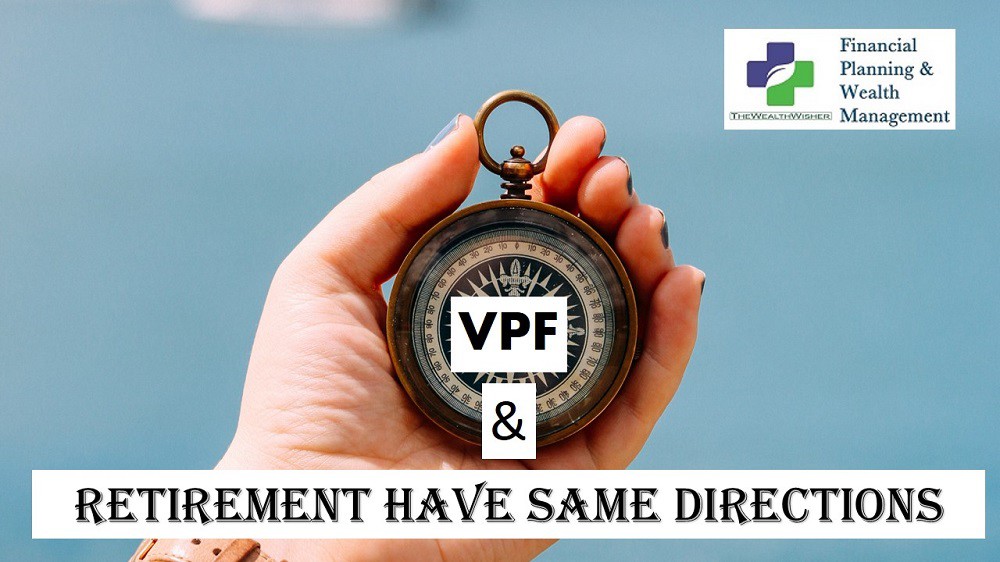Very few instruments have “fixed rate” & “tax-free” tag associated with them. Considering last year when rates in fixed deposits were at lowest and debt funds being highly volatile, Voluntary Provident Fund is an ideal choice for debt investments. Let’s see the details.
The advantage of investing in voluntary provident fund lies in the fact that now there are very few investments in the debt category that continue to give very attractive returns. We all know Debt & Equity go hand in hand and asset allocation is the key to balance risk and make good returns.
VPF is an addon to the existing Employees Provident Fund (EPF).
Voluntary Provident Fund(VPF) has seen the least cut in rates in recent times. The EPF and the extension VPF are also highly tax-efficient and safe.
Voluntary Provident Fund Details
VPS is only for salaried employees having PPF deduction. 
Someone who already has an EPF or GPF deduction of 12% of your basic and dearness allowance can avail VPF.
In EPF the employer matches the contribution with a similar amount. The rule says you cannot increase your EPF. But you can increase your contribution voluntarily and the employer will not contribute anything on this.
You can invest up to 100% of your basic and dearness allowances in the VPF. The VPF will earn the same rate as the EPF and accumulates in your EPF account.
As discussed employer will only contribute 12%. Beyond that it is called VPF and employer is not bound to contribute anything on this contribution.
VPF is nothing but your contribution to EPF above 12% limit.
The VPF is invested in the same manner as EPF. In fact, it is the same fund. For subscribers rules pertaining to the EPF-including lockin, withdrawal, loans, and taxation also apply to the VPF.
Why Voluntary Provident Fund or VPF?
The key attraction of VPF Is the high rate it enjoys like EPF.

Employee Provident Fund Organization (EPFO) has fixed the rate on EPF balances for 2017-18 at 8.65%. For 2018-19 EPFO has recommended for 8.55%.
The other major advantages of EPF and VPF is safety. They are as safe as the rates are guaranteed by the government through Ministry of Labour.
The third reason is tax benefit.
You get benefit under Sec 80C on contributions. Also, interest earned is exempt from tax, and so is the maturity amount –that is, these investments come under the Exempt-Exempt-Exempt (EEE) category.
If you compare it with bank FD now, the FD rates for 3 years are around 7%. The interest is taxable with the only exemption of Rs 10000 per year (Rs 50K for Senior Citizens).
Some more points before you start investing in Voluntary Provident Fund
The investments in VPF is covered under Section 80C (up to the overall limit of rupees 1.5 lakh a year). 
You can invest more than this limit, but will not get the initial tax break. The interest earned and the corpus though will continue to be exempt from tax. The maximum amount that you can invest is 100% of Basic & DA.
The rates on EPF and VPF change every year and are fixed by the EPFO Department.
Also with the EPFO gradually increasing exposure to equity investments (15% now with a proposal to increase to 50%) the returns may increase in future and lose their correlation with debt instruments.
Process of investing in VPF
The process or paperwork for investing in the VPF is very simple. You only have to inform your employer about the additional amount you want to contribute to the VPF. The amount will get deducted from your monthly pay.
Some employers allow employees to enroll for VPF and make changes to the amount contributed on a monthly basis others allow this once or a few times in a year.
Should you invest?
My question is- are you looking for Debt Investment under your asset allocation for long-term goals like retirement?
Yes, it’s good debt investments but doesn’t go overboard with your VPF allocation if you don’t need it. We try to bend towards “fixed”, but one must invest strictly as per his asset allocation.
Contribution to VPF reduces your monthly take-home pay to that extent. There is no point investing heavily if your monthly budget suffers.
An investment portfolio should have a good mix of debt, equity and other investments. Equity investments in a well managed mutual fund portfolio have potential to deliver much superior returns in long term.
Hope now you know the concept of voluntary provident fund, its benefits, and other details.
Share your thoughts on this investment option and share the article with your friends using the social media icons on this page.











i wantto open VPF ac as soon as possible . i m business man
Hi Mr Ravi… it is not possible for businessman as VPF is extension of EPF. So if you are getting and EPF deduction then you can avail VPF.